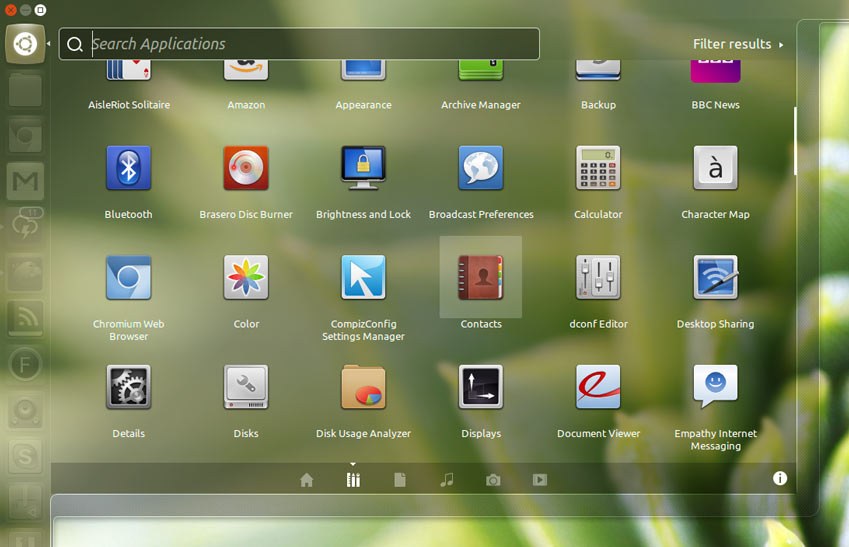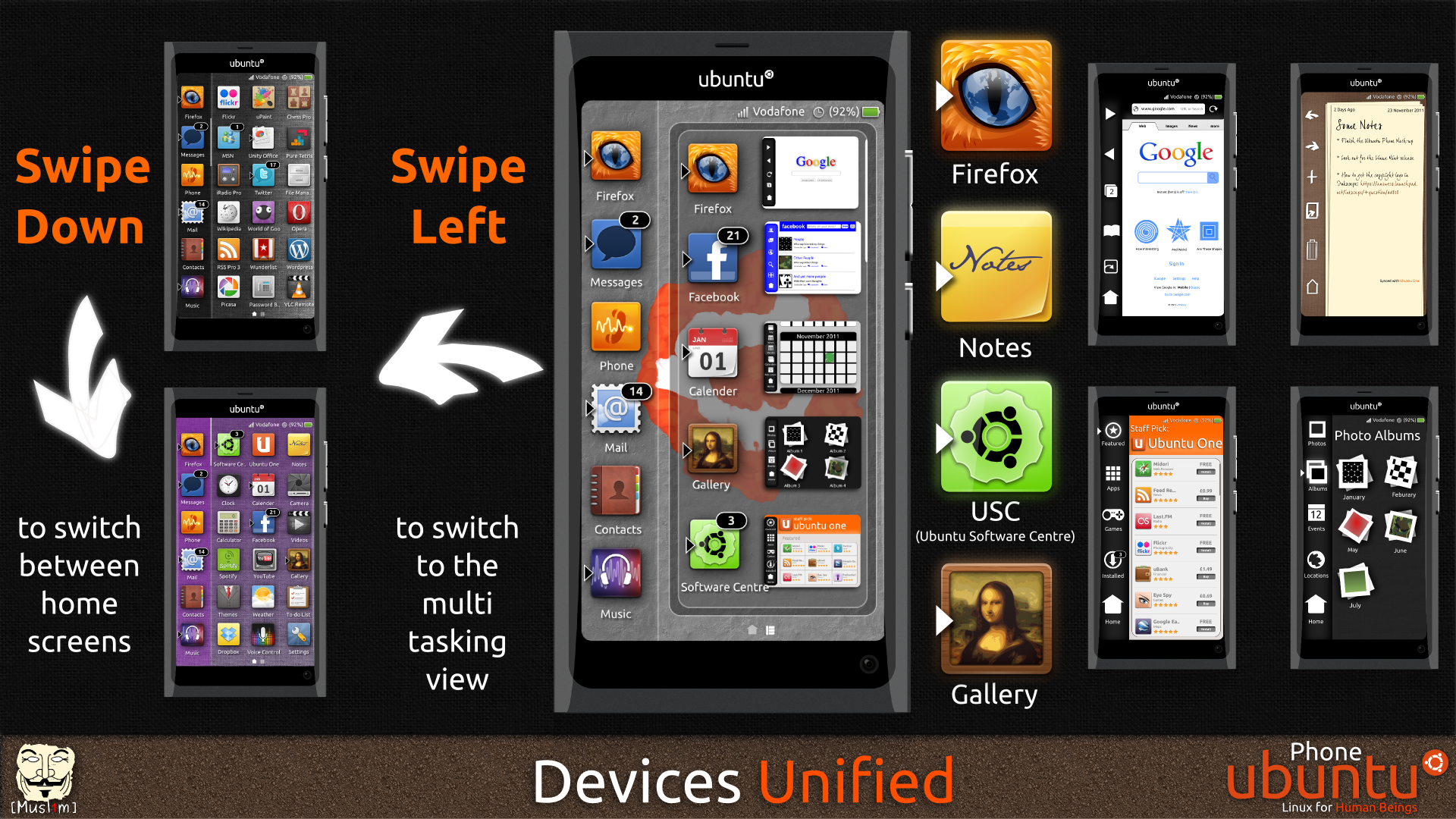Desktop Linux is a thriving ecosystem, and this is also its downfall. Fragmentation has split the already drifting community into cultist tribes that claim their distribution to be king. This is a comparison of what the main Linux distributions offer over one another. There are more than I write about in this article, but it is only fair to right about what I have used for more than a day.
Ubuntu
 Ubuntu is the third result in a google search for "Linux". It is usually the first stop in a young Linux User's journey for good reason. Tools like automatic update reminders, a very intuitive user interface (with an OS Xish feel) will be comfortable to use for a user migrating from another Operating System. For beginners there is no doubt in my mind. Ubuntu is king for integration and user experience. But for getting real work done after you're comfortable with Linux? Maybe not so much.
Ubuntu is the third result in a google search for "Linux". It is usually the first stop in a young Linux User's journey for good reason. Tools like automatic update reminders, a very intuitive user interface (with an OS Xish feel) will be comfortable to use for a user migrating from another Operating System. For beginners there is no doubt in my mind. Ubuntu is king for integration and user experience. But for getting real work done after you're comfortable with Linux? Maybe not so much.Ubuntu's Ubuntu One daemon and other applications like it tend to eat more RAM than a distribution without Ubuntu's "bloat". A variant such as Xubuntu would be better for seriously using Ubuntu on a production machine. The Ubuntu base is nice for those looking to get work done though, mainly because of the PPA system. PPA's are basically remote repositories you can subscribe to with add-apt-repository and pull packages from.
Linux Mint

Linux Mint takes Ubuntu and makes it sane again for normal desktop users. Unity is innovative, but it's definitely not for everybody; especially if the idea of how a desktop works (start menu, desktop shortcuts, etc) is well ingrained in your mind. Linux Mint maintains two desktop version, one with the lightweight Gnome 2 fork MATE and the other with Cinnamon, a fork of Gnome-shell. I haven't given Cinnamon the reviews it deserves. It's truly a great desktop environment, especially since the menu that launches applications and searches locations has improved in terms of relevance and speed.
Beginning users will find Linux Mint comfortable as it comes with tools that were designed to make Ubuntu, one of the easiest distros, even easier. Their update manager rates updates based on importance so you can delay serious updates until you're ready for them. Linux Mint is also compatible with Ubuntu's PPA system if you're using their Ubuntu edition, but Linux Mint: Debian Edition is not. Keep in mind that Linux Mint: Debian Edition is basically Debian with the Linux Mint tools on it, so later in this article when Debian is talked about think back to Linux Mint: Debian Edition.
 Debian
DebianDebian is a very popular Linux Operating System, but not necessarily for its use on Desktops. Some users find Debian Testing to be comfortable for desktop use, but even then packages and support tend to lack behind upstream. The main appeal of Debian is rather its viability in servers, as versions are supported for quite a long time and packages are vigorously tested for problems that could reduce uptime or performance by even a bit. One statistic read that 32% of all the world's servers used Debian. If you're deadset on using Debian, then Crunchbang, a Debian derivitive of Testing (like Ubuntu) that comes with the Openbox window manager and a dark theme may be for you. Crunchbang is so similar to Debian that it is not worth its own section, but it has a unique and active forum / irc community apart from Debian's.
Fedora
Fedora is the "testing" version of Red Hat Enterprise Linux, which is another huge competitor in the server market. Unlike its parent (daughter?) operating system Fedora is primarily used on the desktop. With the Gnome Shell and no modifications to upstream applications you will find there to be familiarity with Fedora and other distributions. Fedora offers an intuitive installer and the yum package management system, with a third party repository so large that it rivals the AUR. Arch and the AUR is mentioned next.
Arch Linux
 Arch Linux is a distribution for advanced Linux users that basically want to configure their system from the ground up. The installation is very minimal (text only), and then the user can choose which packages to install to custom tailor their installation of Arch Linux. The selling point to Arch is that it's rolling release, so a user never has to reinstall (until they bork something), the package management (the largest repositories in existence exist for Arch and its fork, Manjaro.), and the KISS principles that another distribution, Chakra, follows even more closely. Chakra is like a preconfigured Arch Linux with KDE that only allows the installation of Qt packages with the option for certain bundles that allow GTK applications. By the way, there's no installer. Just some scripts and pacstrap.
Arch Linux is a distribution for advanced Linux users that basically want to configure their system from the ground up. The installation is very minimal (text only), and then the user can choose which packages to install to custom tailor their installation of Arch Linux. The selling point to Arch is that it's rolling release, so a user never has to reinstall (until they bork something), the package management (the largest repositories in existence exist for Arch and its fork, Manjaro.), and the KISS principles that another distribution, Chakra, follows even more closely. Chakra is like a preconfigured Arch Linux with KDE that only allows the installation of Qt packages with the option for certain bundles that allow GTK applications. By the way, there's no installer. Just some scripts and pacstrap.Gentoo Linux
 Gentoo is BY FAR the hardest distribution to install. Gentoo is basically Arch taken to a whole new level of minimalism. Gentoo must be compiled fully to be installed. There is no installer and no tools by the (wonderful) wiki to guide the user. This is not for Linux Experts, it's for the type of people with BSD toasters and a HUD in their bathroom mirror. Although it does provide a lot of flexibility and good source package management with USE flags, to truly reduce bloat. A fork of Gentoo, Sabayon, makes the installation far easier with Fedora's Anaconda and adds binary package management. No more wasted weeks spent compiling Libreoffice.
Gentoo is BY FAR the hardest distribution to install. Gentoo is basically Arch taken to a whole new level of minimalism. Gentoo must be compiled fully to be installed. There is no installer and no tools by the (wonderful) wiki to guide the user. This is not for Linux Experts, it's for the type of people with BSD toasters and a HUD in their bathroom mirror. Although it does provide a lot of flexibility and good source package management with USE flags, to truly reduce bloat. A fork of Gentoo, Sabayon, makes the installation far easier with Fedora's Anaconda and adds binary package management. No more wasted weeks spent compiling Libreoffice.Conclusion
I find myself most comfortable using Ubuntu on desktop systems, Fedora on Laptops, and Debian on any servers. Arch and Gentoo are specialist distributions and should be used as such.






